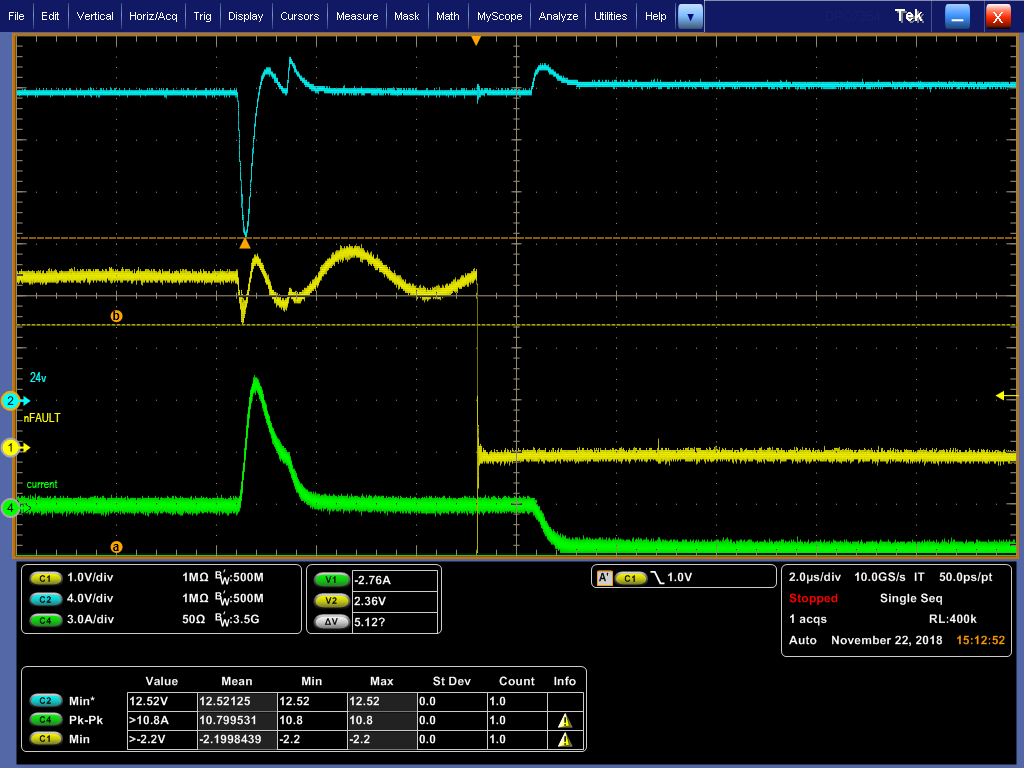Hello
When I using DRV8840, regarding OCP function, I could fully understand how OCP function operated like 6A/3.75us
but I have a question related to abnormal condition that current level over 6A but time duration is less than 3.75us.
For example, in case of 8A peak current applied under 1us time dulation, Is it possible to operate OCP function ?
When the time duration is much less than 3.75us, what is maximun current level level for the OCP
and how can I figure out this condition?


